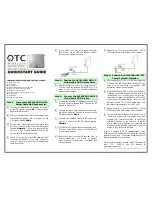
Regulatory Notices
This section contains regulatory information for your device.
The design of the NETGEAR Mingle Mobile Hotspot complies with U.S. Federal
Communications Commission (FCC) guidelines respecting safety levels of radio frequency (RF)
exposure for mobile devices, which in turn are consistent with the following safety standards
previously set by U.S. and international standards bodies:
●
ANSI / IEEE C95.1-1999,
IEEE Standard for Safety Levels with Respect to Human
Exposure to Radio Frequency Electromagnetic Fields, 3kHz to 300 GHz
●
National Council on Radiation Protection and Measurements (NCRP) Report 86, 1986,
Biological Effects and Exposure Criteria for Radio Frequency Electromagnetic
Fields
●
International Commission on Non-Ionizing Radiation Protection (ICNIRP) 1998,
Guidelines for limiting exposure to time-varying electric, magnetic, and
electromagnetic fields (up to 300 GHz)
FCC ID
: PY3AC778S
RF Exposure
- The NETGEAR Mingle Mobile Hotspot has been tested for compliance with
FCC RF exposure limits in a portable configuration. At least 1.0 cm of separation distance
between the NETGEAR Mingle Mobile Hotspot and the user’s body must be maintained at all
times. This device must not be used with any other antenna or transmitter that has not been
approved to operate in conjunction with this device.
WARNING (EMI) - United States FCC Information
- This equipment has been tested and
found to comply with the limits for a Class B computing device peripheral, pursuant to Part 15 of
the FCC rules. These limits are designed to provide reasonable protection against harmful
interference in a residential installation.
This equipment generates, uses, and can radiate radio frequency energy and, if not installed
and used in accordance with the instructions, may cause harmful interference to radio
communications. However, there is no guarantee that interference will not occur in a particular
installation.
If this equipment does cause harmful interference to radio or television reception, which can be
determined by turning the equipment off and on, the user is encouraged to try to correct the
interference by one or more of the following measures:
●
Reorient or relocate the receiving antenna.
●
Increase the separation between the equipment and receiver.
Regulatory Notices
119
















































